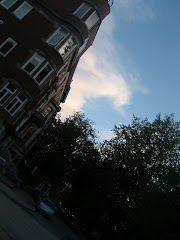 economic and population boom.
economic and population boom.Despite Japan's sluggish economy and little prospect of population growth, Tokyo has now more than 10 plans of skyscrapers over 500m. Sky City 1000 is among those blueprints. If this plan is carried out, it is considered to help alleviating chronic congestions and compensating lack of green areas. According to the planner, Takenaka Corporation, this 1,000m tall high-rise is "a fusion of architecture, transportation, communications, and energy" which offers "intensive functions and harmony with the natural environment". This vertical city is comprised of 14 concave dish- shaped
"Space Plateaus" stacked one upon the other. Residences, offices, commercial facilities, schools, theaters and so forth are organically located in these spaces, and they can accommodate 3,500 full-time residents and 10,000 workers. Aside from triple-decker elevators which connects those plateaus, trains circuit in each plateau facilitating the travel within the city. Openings between the plateaus let the air and natural light come in, and they also serve as the vents for toxic smokes once a fire occurs. Green areas can prevent the fire from spreading.
(Graphics: taken from website of Takenaka Corporation)

No comments:
Post a Comment